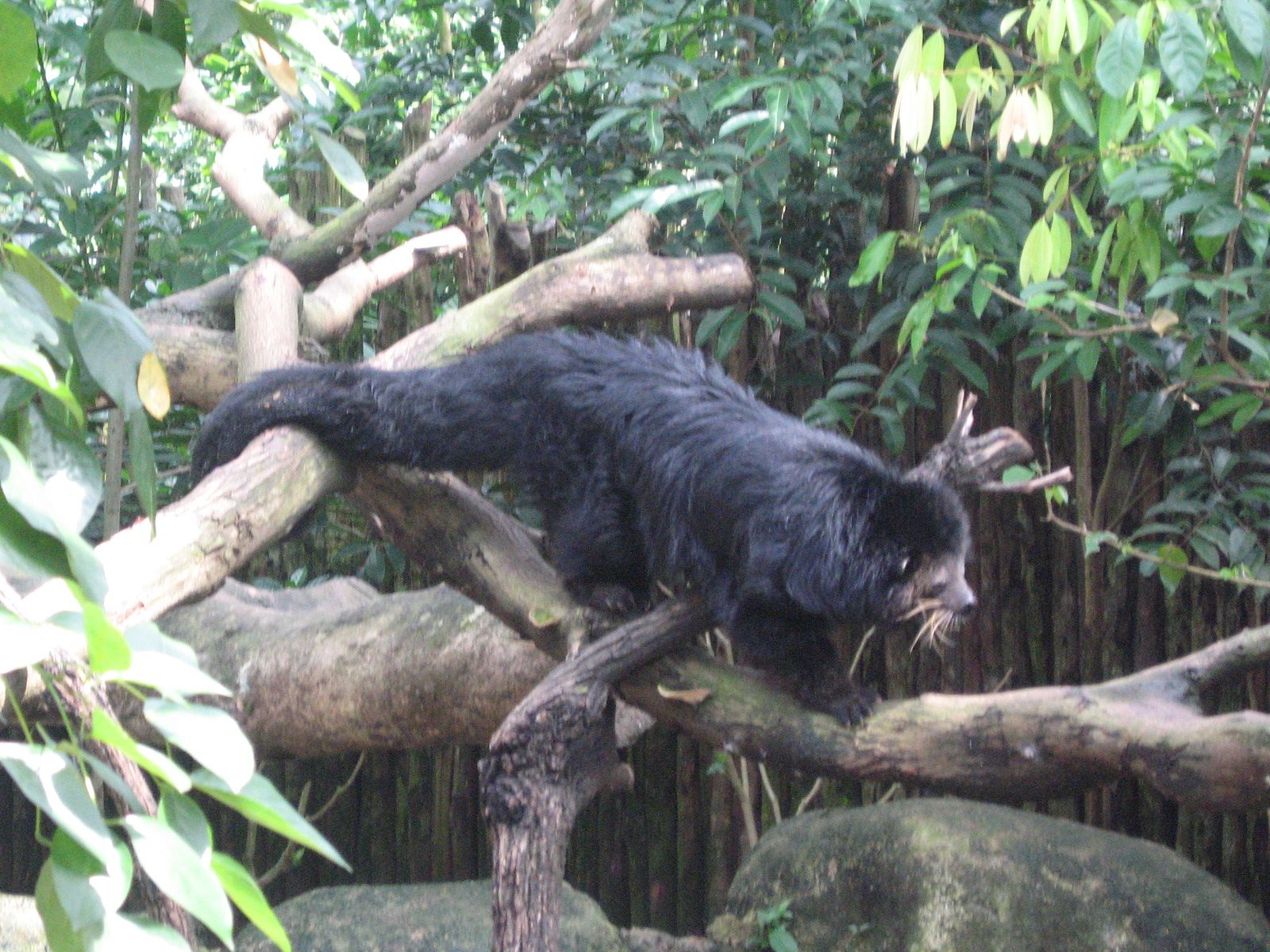Follow us on Google News (click on ☆)
With its thick fur and long whiskers, the binturong looks like a cross between a bear and a cat. Native to the tropical forests of Southeast Asia, it spends most of its time in trees, moving with surprising agility despite its massive body.
One of the most remarkable characteristics of the binturong is its buttery popcorn smell. This particular scent comes from the presence of 2-acetyl-1-pyrroline, a compound also released when cooking corn or bread. The glands located under the animal's tail secrete this substance, used to mark its territory.
The binturong is an excellent climber, thanks to its prehensile tail which acts like a fifth limb. This adaptation allows it to move easily through trees, where it spends most of its life. Solitary and nocturnal, it communicates mainly through sounds and scent markings.
Male binturongs produce a more concentrated scent than females, which may play a role in sexual selection. A study published in PubMed in 2016 suggests this characteristic helps males signal their presence and hormonal status to females.

The binturong's prehensile tail serves as a fifth limb for grasping branches.
Image Wikimedia
Despite their robust appearance, binturongs are sensitive animals, capable of expressing a range of emotions through vocalizations. They can purr when content, or scream and hiss when frightened or annoyed.
How does the binturong use its tail?
The binturong's tail is prehensile, meaning it can grasp and hold objects, like tree branches. This adaptation is rare among carnivorous mammals.
By using its tail as a fifth limb, the binturong can move nimbly through trees. This allows it to reach areas inaccessible to other animals of its size.
The tail also plays a role in the animal's balance, helping it stabilize during nocturnal movements. This characteristic is essential for an animal that spends most of its life at height.
The evolution of a prehensile tail in the binturong illustrates how species adapt to their ecological niche, developing unique traits to survive in specific environments.
